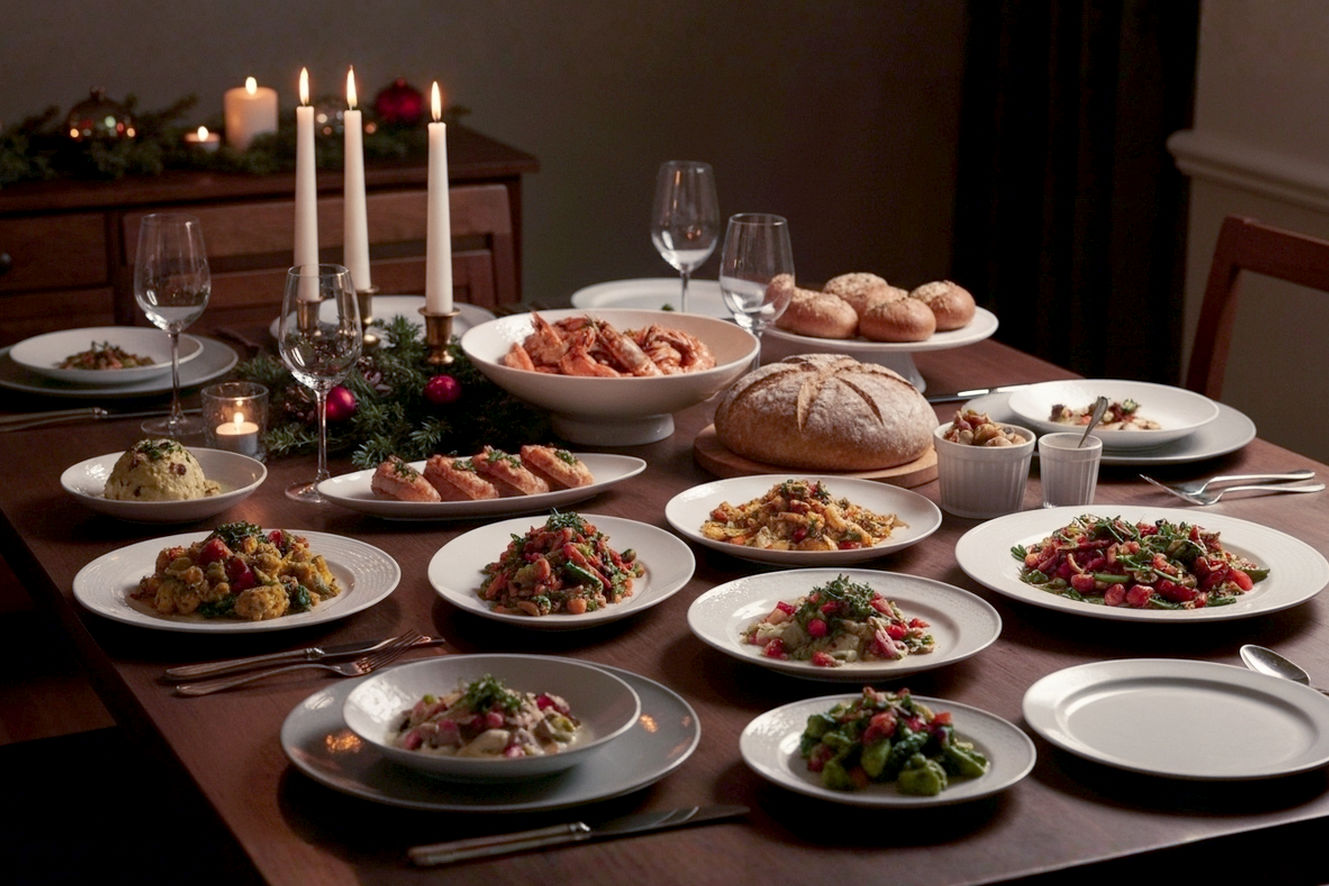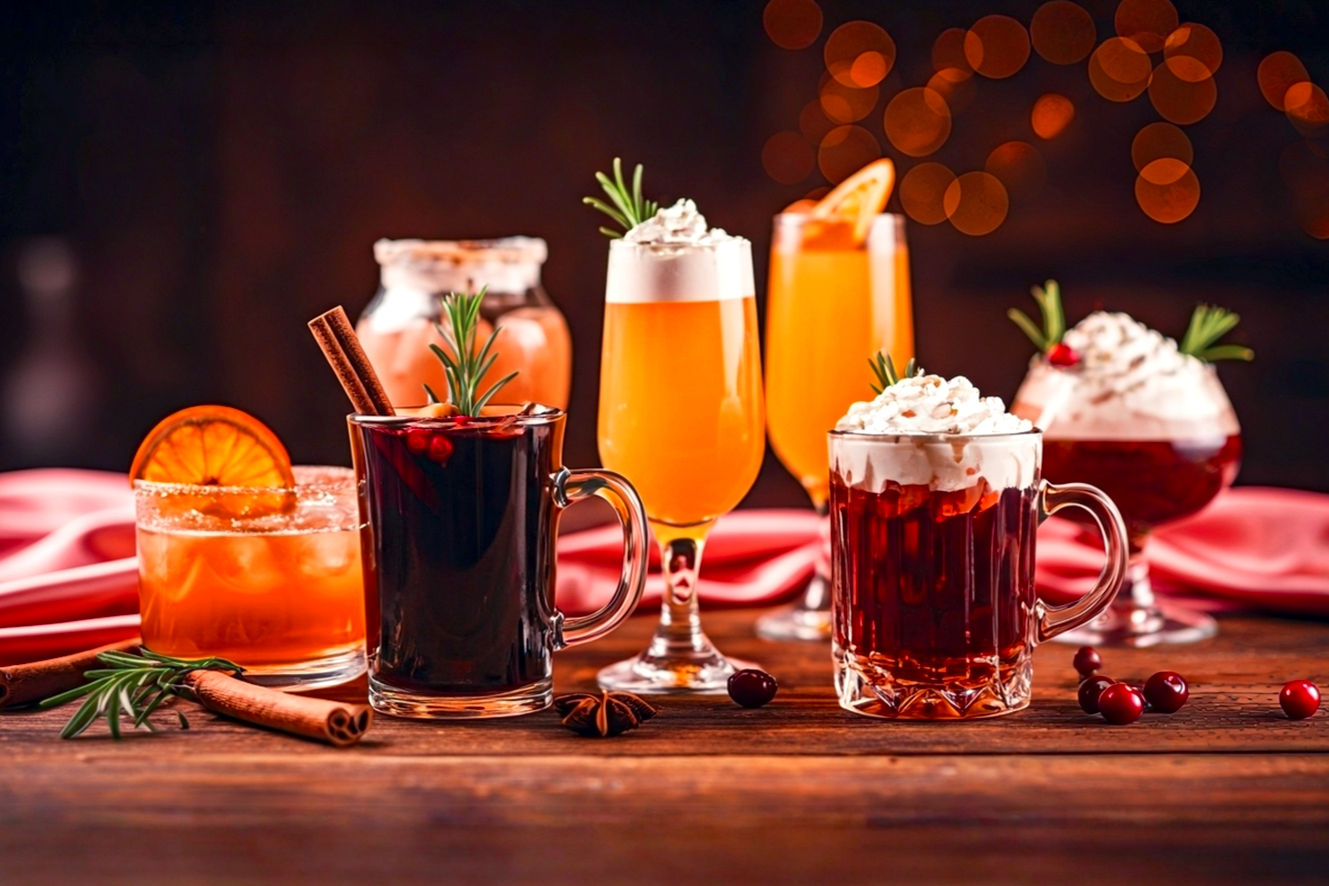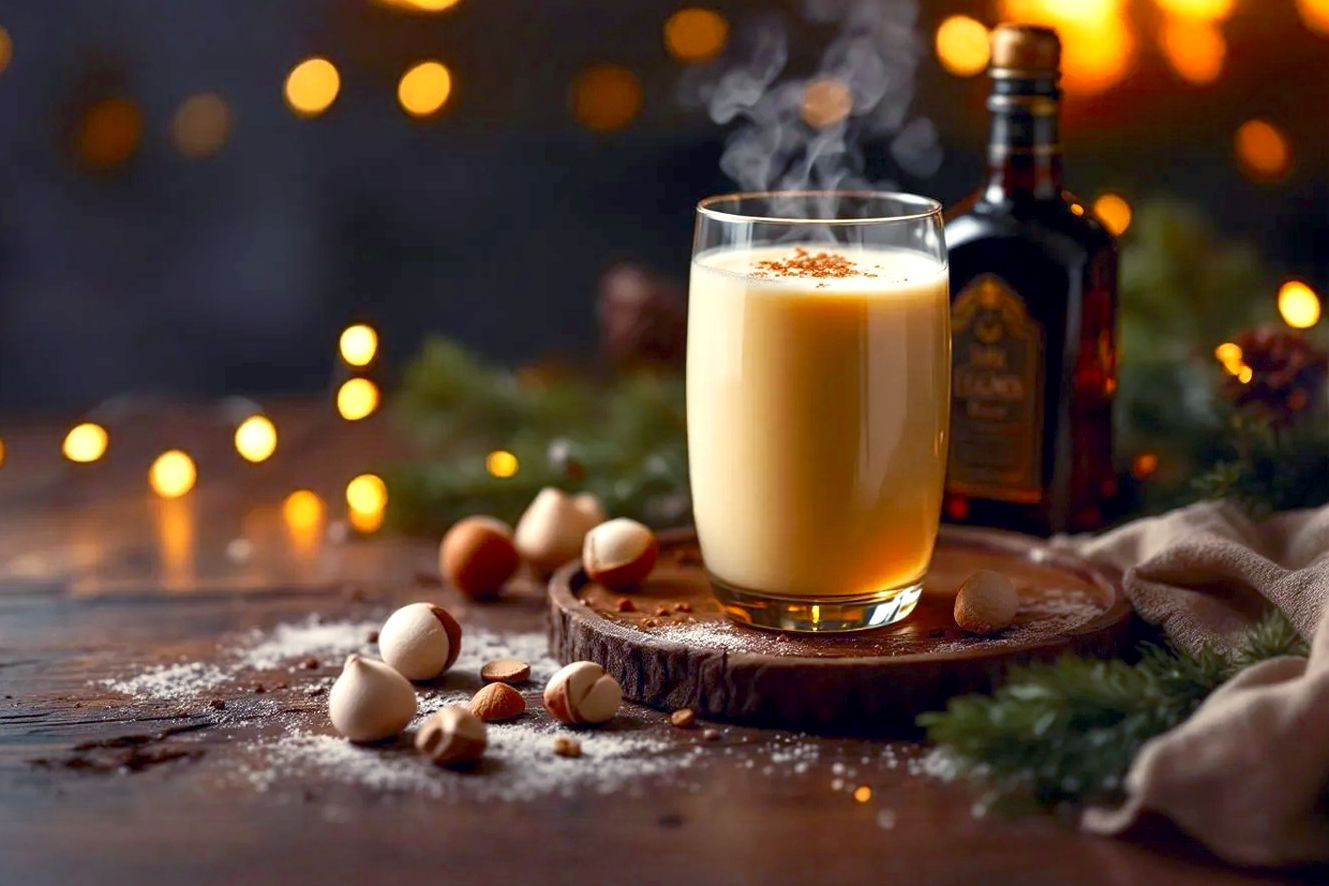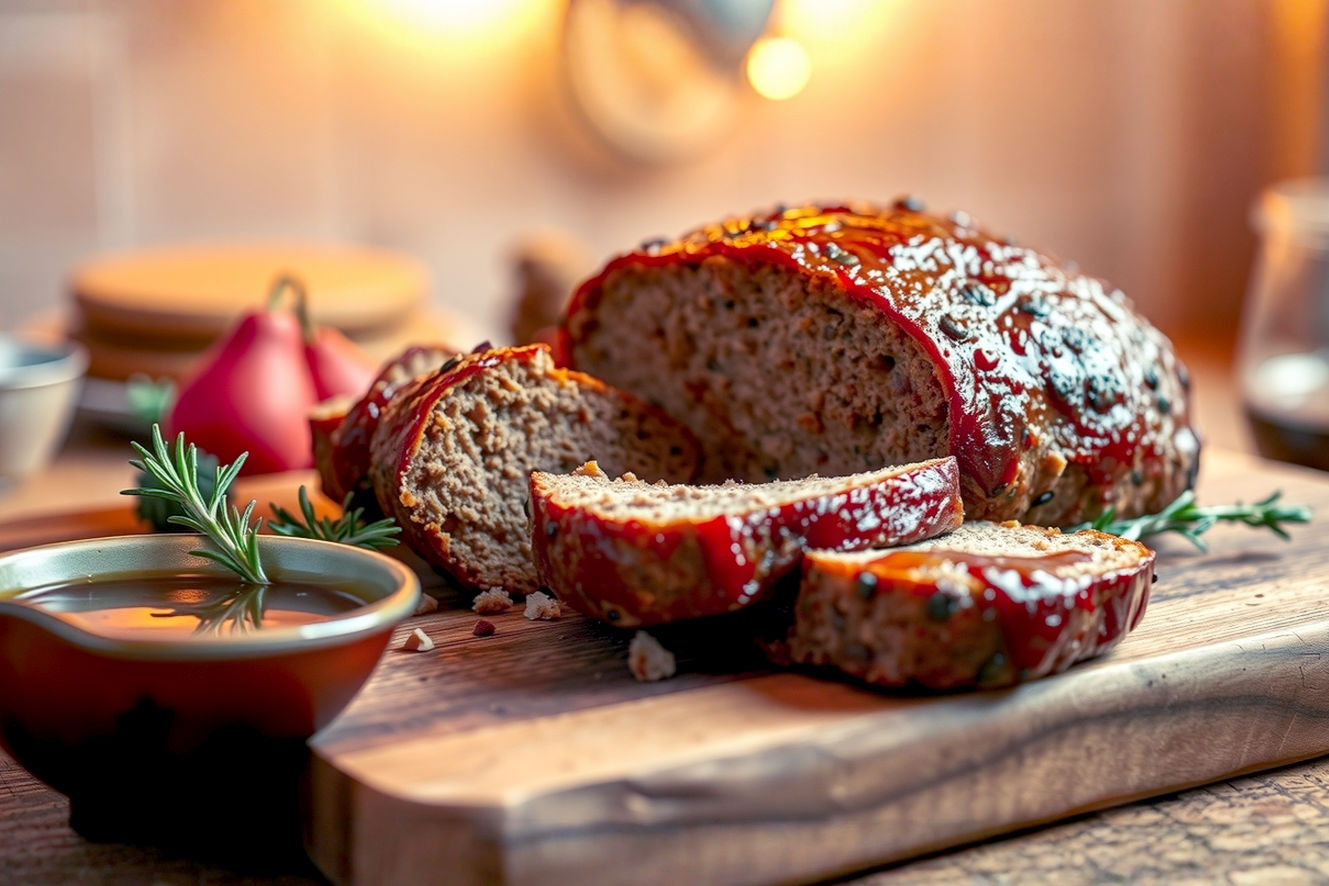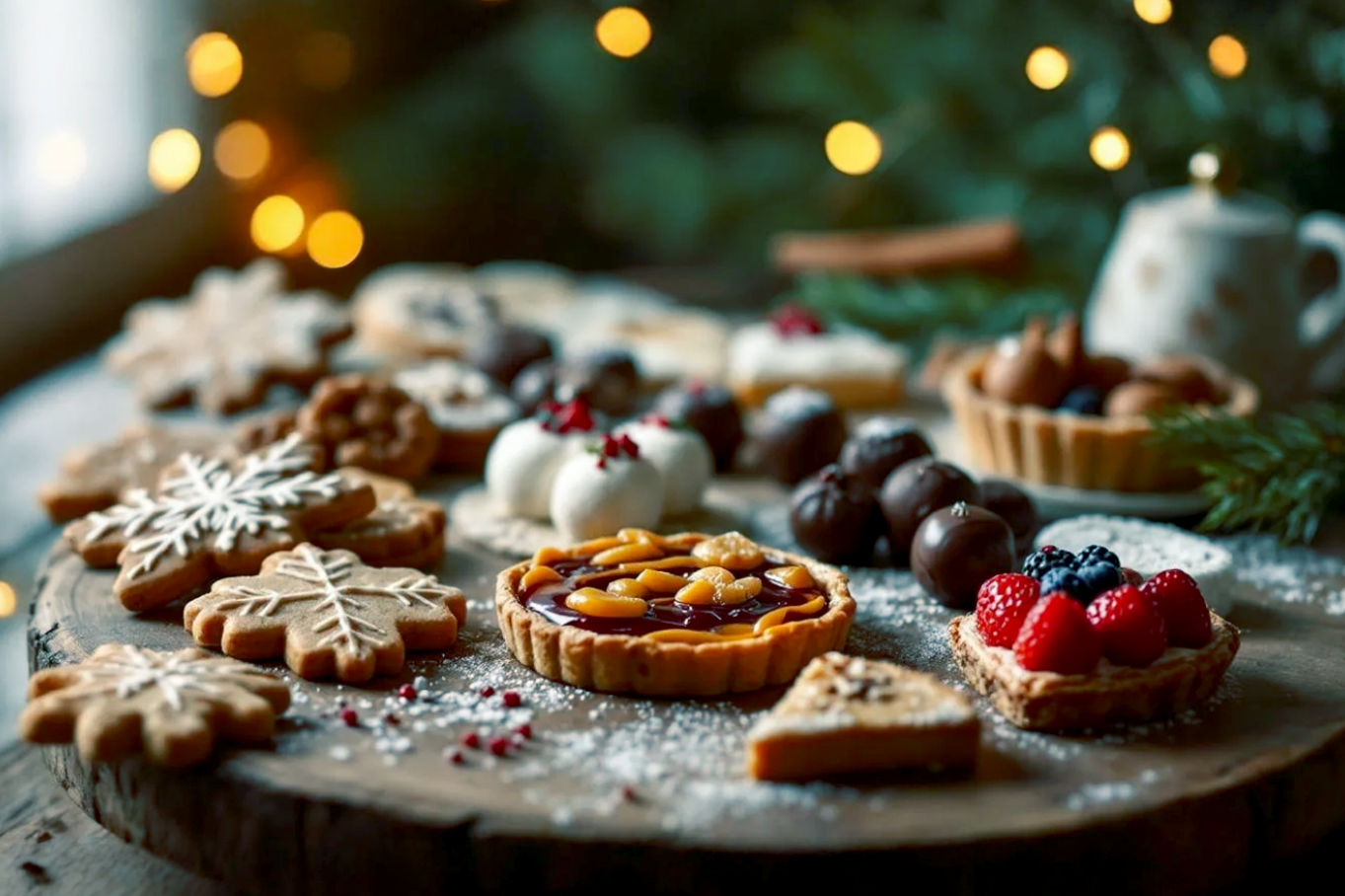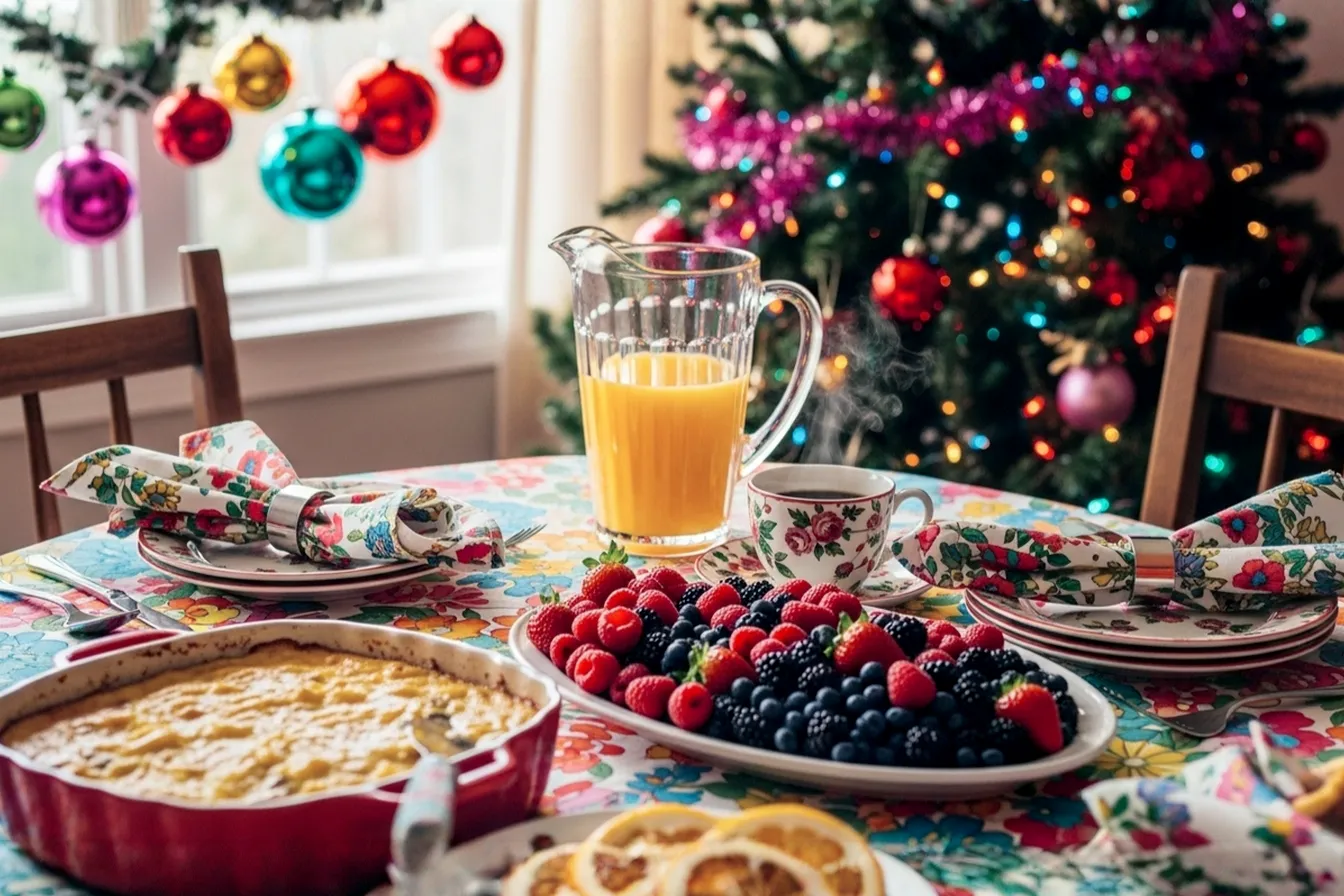This post may contain affiliate links. If you make a purchase through these links, we may earn a commission at no additional cost to you.
When you think of gingerbread, what usually comes to mind? For most of us, it’s the festive aroma of Christmas, perhaps a charming gingerbread house adorned with candy, or a simple gingerbread man cookie. This classic treat has long been a staple of winter holidays, deeply rooted in traditions of warmth and celebration. However, limiting gingerbread to just the holiday season or to a few familiar shapes means missing out on its incredible versatility.
Gingerbread, with its robust flavor profile and sturdy texture, holds an untapped potential far beyond its traditional perception. It’s a fantastic medium for both edible art and delicious desserts, offering a unique canvas for creativity throughout the entire year. Imagine a springtime garden scene crafted from gingerbread, a spooky Halloween display, or even an elegant wedding centerpiece.
This article will guide you through expanding your gingerbread horizons, exploring innovative techniques, and discovering how to incorporate this beloved spice cookie into celebrations and everyday moments, no matter the season. We’ll delve into mastering the dough, elevating your decorating skills, and finding creative gingerbread ideas for all occasions.
The Foundation: Mastering Your Gingerbread Dough
The secret to truly creative gingerbread ideas lies in understanding and mastering your dough. Not all gingerbread dough is created equal; the type you choose depends heavily on your final project. Just like a sculptor selects different clays for different works, a gingerbread artist needs to pick the right dough.
Understanding Dough Types
There are two primary categories of gingerbread dough, each designed for specific applications:
Structural Dough: Building Blocks for Edible Art
For projects like intricate gingerbread houses, detailed sculptures, or any creation that needs to stand tall and hold its shape, you’ll need a structural dough. This type of dough is engineered for stability and crispness, with minimal spreading during baking. It’s the backbone of any ambitious gingerbread architecture.
Technically, structural gingerbread dough typically features a higher flour-to-fat ratio compared to softer varieties. This increased proportion of flour provides the necessary gluten structure to prevent collapse and excessive spreading. It also usually contains less chemical leavening agents, such as baking soda or baking powder, to ensure the baked pieces remain dense and firm rather than light and airy. Baking structural gingerbread often involves a longer baking time at a slightly lower temperature. This extended, gentler bake helps to dry out the dough more thoroughly, resulting in a very firm, almost cracker-like consistency that is essential for weight-bearing elements. Some recipes even call for a portion of shortening alongside butter, as shortening contributes to a firmer texture and helps prevent the dough from becoming too tender. This is key for gingerbread dough stability.
Edible/Soft Dough: For Delicious Treats
When your goal is a delightful cookie or a tender cake, you’ll opt for an edible or soft dough. This dough prioritizes chewiness, a pleasant mouthfeel, and rich flavor. Think of the classic gingerbread man that’s meant to be enjoyed bite by bite.
In contrast to structural dough, soft gingerbread dough has a more balanced ratio of fat and sugar, which contributes to its tenderness and moistness. It generally includes more leavening agents, allowing the cookies or cakes to rise slightly and achieve a softer crumb. Baking times are typically shorter for soft doughs, often at a slightly higher temperature, to ensure they remain chewy and don’t dry out. The type of molasses used also plays a significant role here. Lighter molasses varieties can result in a milder flavor and softer texture, while darker, more robust molasses will yield a stronger gingerbread taste and a slightly chewier consistency. Understanding these differences is crucial for any gingerbread recipes beyond basics you plan to execute.
Key Ingredients and Their Roles
Each ingredient in your gingerbread dough plays a vital part in its final texture and flavor:
- Flour: All-purpose flour is standard, but for extra sturdy structural pieces, some bakers use a portion of bread flour, which has a higher protein content and develops more gluten for strength.
- Sweeteners: Molasses is the signature sweetener, providing gingerbread’s distinctive dark color and deep, complex flavor. Different types, from light to blackstrap, offer varying intensities. Brown sugar adds moisture and a caramel note, while granulated sugar contributes to crispness and structure.
- Fats: Butter provides rich flavor and tenderness. Shortening (vegetable fat) can be used, especially in structural doughs, for added firmness and to reduce spread. Some recipes might even incorporate a touch of oil for a softer crumb.
- Spices: This is where gingerbread truly shines. Ginger (ground ginger, fresh ginger for some applications) is paramount, offering warmth and a characteristic bite. Other essential spices include cinnamon, cloves, and nutmeg. For a more complex profile, consider adding allspice, a pinch of black pepper for a subtle kick, or even cardamom for an aromatic lift. Always use fresh, high-quality spices for the best flavor. This creates amazing gingerbread spice blends.
- Leavening: Baking soda reacts with the acidic molasses to create carbon dioxide, which helps the dough rise and become tender. Baking powder can also be used, especially in recipes aiming for a lighter texture.
- Eggs and Liquids: Eggs act as a binder, adding richness and helping with structure. Liquids like water, milk, or even strong brewed coffee (which enhances the chocolatey notes of molasses) hydrate the flour and bring the dough together.
Troubleshooting Common Dough Issues
Even experienced bakers encounter challenges. Knowing how to troubleshoot common gingerbread dough issues can save your project:
- Too Sticky/Dry Dough: If your dough is excessively sticky, gradually add a tablespoon of flour at a time until it’s workable but still pliable. If it’s too dry and crumbly, add a teaspoon of liquid (water, milk, or even a bit more molasses) until it comes together. Remember, chilling the dough often helps with stickiness.
- Dough Spreading Too Much: This is a common issue for structural pieces. It can be caused by too much fat, too little flour, or insufficient chilling. Ensure your recipe has a good flour-to-fat ratio, chill the dough thoroughly (at least 30 minutes, preferably longer), and consider a slightly lower baking temperature.
- Cracking During Baking: Cracks often occur if the dough is too dry or if the oven temperature is too high, causing the outside to set too quickly while the inside expands. Ensure your dough is properly hydrated and consider reducing the oven temperature slightly.
- Achieving Consistent Thickness: Inconsistent thickness leads to uneven baking. Always use a rolling pin with adjustable guides or use two wooden dowels of equal thickness on either side of your dough to ensure a perfectly even roll. This is especially crucial for structural pieces.
Mastering these foundational aspects of gingerbread dough will empower you to tackle even the most ambitious and creative gingerbread ideas.
The Art of Decoration: Elevating Your Gingerbread
Once your gingerbread pieces are baked and cooled, the real magic begins: decoration. This is where your creative gingerbread ideas truly come to life. While royal icing is the traditional workhorse, a variety of other mediums can add incredible detail and visual appeal.
Royal Icing: Your Primary Medium
Royal icing is the cornerstone of gingerbread decoration, acting as both a decorative element and a powerful adhesive. It dries to a hard, smooth, and durable finish, making it perfect for intricate piping and structural “glue.”
A basic royal icing recipe typically consists of powdered sugar, meringue powder (or fresh egg whites), and water. The consistency of your royal icing is paramount and needs to be adjusted for different tasks:
- Piping Consistency: This is thick enough to hold its shape when piped, ideal for outlines, intricate details, borders, and creating dimensional elements. It should be stiff enough to form peaks but still flow smoothly from a piping bag.
- Flooding Consistency: Thinner than piping consistency, this is used to fill in outlined areas, creating a smooth, flat surface. It should be thin enough to spread easily but thick enough not to run off the edges. A good test is to drizzle a spoonful back into the bowl; if it disappears into the surface within 10-15 seconds, it’s usually good for flooding.
- Glue Consistency: This is the thickest consistency, akin to toothpaste. It’s used to bond gingerbread pieces together for structures, ensuring a strong, lasting hold. These are crucial royal icing tips for gingerbread.
Tips for coloring and preventing bleeding: Use gel food colors, as liquid colors can thin the icing too much. Add color gradually to achieve your desired shade. To prevent colors from bleeding into each other, ensure the first layer of icing is completely dry before applying a contrasting color next to it. Humidity can also cause bleeding, so work in a dry environment if possible.
Technical details: Meringue powder is highly recommended over fresh egg whites for safety (eliminating salmonella risk) and consistency. It provides a stable, reliable structure. When mixing royal icing, use a stand mixer with a whisk attachment on medium-low speed. Avoid overmixing, as this can incorporate too much air, leading to brittle icing that cracks easily. Mix until stiff peaks form, then switch to a paddle attachment on low speed for a few minutes to “de-air” the icing, making it smoother and stronger. Store royal icing in an airtight container, covered with plastic wrap directly on the surface, to prevent it from crusting.
Beyond Royal Icing
While royal icing is essential, combining it with other edible mediums can elevate your creative gingerbread ideas even further:
- Fondant and Gumpaste: These pliable sugar pastes are fantastic for intricate details, sculpted elements, and creating smooth, uniform finishes on larger gingerbread surfaces. Fondant is softer and more flexible, great for draping or covering. Gumpaste dries harder and faster, making it ideal for delicate, freestanding shapes like flowers or tiny figures.
- Techniques: You can roll them thin, cut them with cookie cutters or knives, and mold them into various shapes. Attach them to gingerbread with a tiny bit of royal icing or edible glue.
- Melted Candy/Isomalt: For stunning “glass” windows, stained-glass effects, or translucent water features, melted hard candies (like Jolly Ranchers) or isomalt are perfect. Isomalt, a sugar substitute, is less prone to crystallization and stickiness than melted sugar.
- Safety and techniques: Always use caution when working with melted candy or isomalt, as they are extremely hot. Melt them slowly in a heatproof bowl or pan. Once melted, carefully pour them into openings in your gingerbread pieces (like window frames) or onto silicone mats to create specific shapes. Allow them to cool completely and harden before handling.
- Edible Paints and Dusts: These add depth, shading, and realistic textures to your gingerbread creations.
- Application methods: Mix edible dusts (like luster dusts for shimmer or petal dusts for matte colors) with a clear alcohol (vodka or grain alcohol) or lemon extract to create edible paints. Apply them with fine brushes for details, or use an airbrush for larger, even coverage and gradients.
- Natural Decorations: Don’t overlook the beauty of natural, edible elements. Nuts (almonds, pecans, walnuts), dried fruits (cranberries, apricots, raisins), seeds (pumpkin, sunflower), edible flowers (pansies, violets), and even fresh herbs like rosemary (for miniature trees) can add organic texture and color. These are all great edible decorations gingerbread can use.
Essential Decorating Tools
Having the right tools makes all the difference in executing your creative gingerbread ideas:
- Piping Bags and Tips: A variety of sizes and shapes are crucial for different details. Round tips (e.g., Wilton 1, 2, 3) for outlines and details, star tips for borders, and leaf tips for greenery.
- Spatulas and Offset Spatulas: For spreading royal icing smoothly over large areas.
- Cookie Cutters: Beyond standard shapes, invest in specialized cutters for specific themes (e.g., miniature trees, animals, seasonal shapes). Custom cutters can be made or ordered for unique designs.
- Sculpting Tools: Small, pointed tools (like those used for clay or fondant) are excellent for adding fine details to fondant or gumpaste elements.
- Brushes: A set of food-safe brushes for edible paints and dusts.
- Rolling Pins (Adjustable Thickness): As mentioned earlier, these are invaluable for ensuring uniform dough thickness, which is critical for even baking and structural integrity.
With these tools and techniques, you’re well-equipped to transform simple gingerbread into stunning works of edible art, bringing your gingerbread decorating ideas to life.
Creative Gingerbread Themes for Every Season
Gingerbread doesn’t have to be confined to December. Its warm, inviting flavor and sturdy nature make it perfect for crafting delightful treats and decorations throughout the entire year. Let’s explore some creative gingerbread ideas for every season.
Springtime & Summer Celebrations
As the weather warms and nature blooms, gingerbread can reflect the freshness and vibrancy of spring and summer.
- Garden Scenes: Imagine miniature gingerbread flower beds bursting with colorful royal icing blossoms. You can create tiny gingerbread trellises covered in edible vines, or even charming gingerbread garden gnomes peeking out from behind candy mushrooms. Buzzing gingerbread bees with delicate royal icing wings can add a whimsical touch. These are perfect gingerbread for spring themes.
- Beach & Ocean: For summer, transport your gingerbread to the seaside. Craft gingerbread sandcastles with textured royal icing “sand,” adorn them with edible seashells, and create shimmering blue royal icing ocean waves. Miniature gingerbread marine life like starfish, crabs, or even a tiny sailboat can complete the scene. This is great for gingerbread for summer.
- Picnic & BBQ: Celebrate outdoor gatherings with miniature gingerbread picnic baskets filled with tiny gingerbread “sandwiches” or “fruit.” Create checkered blankets using piped royal icing patterns and add tiny grilled items like hot dogs or corn on the cob. These unique gingerbread designs are perfect for a summer party centerpiece.
Autumnal & Harvest Festivities
When the leaves turn golden and the air grows crisp, gingerbread can embrace the rich colors and cozy feelings of autumn.
- Pumpkin Patches & Corn Mazes: Design a gingerbread pumpkin patch with plump orange royal icing pumpkins and winding paths. Incorporate fall foliage using edible paints or colored fondant leaves. Tiny gingerbread scarecrows and hay bales add to the rustic charm. This is perfect for gingerbread for fall.
- Harvest Feasts: Create miniature gingerbread pies, complete with lattice tops, or small loaves of gingerbread “bread” adorned with edible grains. A gingerbread cornucopia overflowing with tiny gingerbread fruits and vegetables makes a stunning centerpiece for an autumnal gingerbread table.
- Halloween Fun: Give the traditional gingerbread house a spooky twist by turning it into a haunted mansion with crooked windows and eerie details. Craft friendly gingerbread ghosts, black cats with green eyes, or even miniature gravestones with spooky inscriptions. These creative gingerbread ideas are a fun alternative to traditional Halloween treats.
Winter Wonders (Beyond Christmas)
While Christmas is gingerbread’s traditional home, winter offers many other themes to explore.
- Snowy Landscapes: Beyond the typical Christmas house, construct gingerbread ski chalets nestled in snow-covered gingerbread mountains. Create an ice skating rink using melted isomalt, complete with tiny gingerbread skaters. Snow-covered trees made from gingerbread and dusted with powdered sugar complete a serene winter scene. This is a great winter gingerbread idea.
- New Year’s Eve: Ring in the new year with gingerbread clocks set to midnight, edible fireworks displays piped with vibrant royal icing, or miniature champagne bottles and glasses. These elegant gingerbread creations are perfect for a New Year’s celebration, expanding gingerbread for holidays (non-Christmas).
- Valentine’s Day: Gingerbread can be incredibly romantic. Bake heart-shaped gingerbread boxes filled with small candies, or create gingerbread “love notes” with sweet messages piped in royal icing. Miniature gingerbread bouquets of royal icing flowers make a charming gift. These advanced gingerbread techniques can make your Valentine’s Day special.
By thinking beyond the usual, you can see how gingerbread’s adaptability makes it a fantastic medium for celebrating every season with delicious and visually stunning creations.
Gingerbread for Special Occasions
Gingerbread isn’t just for seasonal decor; its ability to be shaped, decorated, and even personalized makes it an excellent choice for significant life events and celebrations. These creative gingerbread ideas can add a unique and memorable touch.
Birthdays: Personalized Sweetness
Birthdays are all about personalization, and gingerbread offers a delightful way to celebrate the individual.
- Themed Cakes: Instead of a traditional cake, consider a gingerbread cake as the base, then use sculpted gingerbread elements to create a theme. For example, a child’s favorite cartoon character can be crafted from gingerbread and affixed to the cake, or a hobby like fishing or gaming can be represented with intricate gingerbread details. The robust flavor of gingerbread pairs surprisingly well with cream cheese frosting or lemon curd, offering a sophisticated twist on a birthday classic. This is a great gingerbread for birthdays idea.
- Edible Party Favors: Send guests home with a sweet reminder of the celebration. Personalized gingerbread cookies, perhaps shaped like the birthday person’s initial or a symbol of their age, make charming party favors. You can also create mini gingerbread “cupcakes” by baking small, thick gingerbread rounds and piping them with royal icing “frosting” and sprinkles.
- Age Milestones: Mark significant birthdays with number-shaped gingerbread pieces that can be decorated elaborately. For a truly unique touch, consider a “gingerbread portrait” – a stylized, edible depiction of the birthday person, crafted from gingerbread and decorated with edible paints and royal icing to capture their features or interests. These make fantastic gingerbread gifts.
Weddings & Anniversaries: Elegant Edibles
Gingerbread might seem unconventional for formal events, but it can be transformed into incredibly elegant and memorable elements for weddings and anniversaries.
- Gingerbread Wedding Cakes: Imagine a multi-tiered wedding cake where each “tier” is a beautifully crafted gingerbread structure. These can be intricately decorated with delicate royal icing lace patterns, edible pearls, and sugar flowers, mimicking the elegance of a traditional wedding cake but with a unique flavor profile. The stability of structural gingerbread dough makes this possible, allowing for impressive height and detail. This is a truly elegant gingerbread concept.
- Wedding Favors: Custom-decorated gingerbread cookies make charming and delicious wedding favors. These can be shaped like hearts, wedding bells, or even miniature versions of the couple’s initial, decorated with their initials, wedding date, or a simple “Thank You.” Each cookie can be individually wrapped and tied with a ribbon. These are perfect gingerbread for weddings.
- Table Centerpieces: Move beyond floral arrangements with intricate gingerbread sculptures as table centerpieces. A miniature gingerbread chapel, a replica of the couple’s first home, or a romantic gazebo can serve as a stunning and conversation-starting focal point. These unique gingerbread designs add a truly personal touch to the celebration.
Corporate Events & Brand Promotion
Gingerbread offers a unique and delicious way to engage clients, promote a brand, or foster team spirit at corporate events.
- Logo Cookies: Branded gingerbread cookies are a fantastic and memorable way to market your company or thank clients. Your company logo can be precisely printed onto gingerbread rounds using edible ink printers, or meticulously piped with royal icing for a handcrafted feel. These are perfect for client gifts, trade show giveaways, or internal celebrations. This is a smart corporate gingerbread idea.
- Product Replicas: For a truly innovative approach, create miniature gingerbread versions of your company’s products. Whether it’s a tiny gingerbread car, a miniature gingerbread smartphone, or a small gingerbread version of a new gadget, these edible replicas are sure to leave a lasting impression. This showcases creativity and attention to detail. This is a great gingerbread marketing tool.
- Team Building Activities: Organize a gingerbread decorating contest as a fun and engaging team-building activity. Provide plain gingerbread pieces, various icings, and decorations, and let teams unleash their creativity. This fosters collaboration and friendly competition, making for a memorable corporate event.
These applications demonstrate that gingerbread is far more than a holiday treat; it’s a versatile medium for personalized, elegant, and even promotional creative endeavors.
Innovative Gingerbread Applications
Beyond traditional cookies and houses, gingerbread’s unique flavor and robust texture open doors to truly innovative culinary and artistic applications. These creative gingerbread ideas challenge conventional uses, pushing the boundaries of what this spiced dough can achieve.
Savory Gingerbread: A Culinary Twist
While gingerbread is overwhelmingly associated with sweetness, its core spice blend—ginger, cinnamon, cloves, nutmeg—actually has a long history of use in savory dishes, particularly in medieval European cuisine. Reintroducing gingerbread to savory contexts can yield surprisingly delicious results. This is a fascinating gingerbread savory application.
- Gingerbread-Spiced Meats: The warm, pungent notes of gingerbread spices make an excellent rub for various meats. For pork, a gingerbread spice rub (ground ginger, cinnamon, allspice, a touch of brown sugar, and salt) can create a beautiful crust and infuse the meat with a subtly sweet and spicy aroma. Similarly, chicken or duck can benefit from a similar dry rub, particularly when roasted or grilled. The spices caramelize slightly during cooking, adding depth and complexity that complements the richness of the meat. This isn’t about making the meat taste like a cookie, but rather using the spice blend to enhance its natural flavors.
- Savory Crackers/Biscuits: Imagine a thin, crisp gingerbread cracker that’s less sweet and more savory. By reducing the sugar and increasing the salt and perhaps a hint of black pepper in your gingerbread dough, you can bake delicious crackers perfect for pairing. These savory gingerbread biscuits can be served with sharp cheeses, creamy pâtés, or a robust charcuterie board. The spices in the cracker provide a warm counterpoint to the richness of the accompaniments, creating a sophisticated flavor combination. These are unique gingerbread recipes.
- Gingerbread-Infused Sauces: The distinct flavor of gingerbread can be subtly incorporated into sauces for glazes or gravies. For instance, a small amount of gingerbread spice blend (or even finely crumbled, unsweetened gingerbread cookie) can be added to a reduction sauce for roasted duck or pork. This infusion adds a layer of aromatic warmth without overpowering the main dish. It’s a culinary technique that leverages the spice profile of gingerbread as an aromatic enhancer rather than a sweet component.
Gingerbread Art & Sculptures
Gingerbread’s ability to hold intricate shapes and its pleasant aroma make it an ideal medium for edible art and detailed sculptures. These creative gingerbread ideas transform baking into a true artistic pursuit.
- Dioramas & Scenes: Take storytelling to a new level by creating complex narrative scenes with gingerbread. This could be a miniature village, a forest scene with gingerbread trees and animals, or even a historical event recreated in edible form. These projects often involve multiple layers of gingerbread, intricate piping, and the careful placement of various edible decorations to build depth and detail. The challenge lies in planning the composition and ensuring all elements are structurally sound. This is true gingerbread art.
- Architectural Models: Beyond the traditional house, gingerbread can be used to replicate famous buildings, landmarks, or even fantastical structures. Imagine a miniature gingerbread Eiffel Tower, a detailed gingerbread castle, or a futuristic gingerbread city. This requires precision cutting, strong structural dough, and meticulous assembly using royal icing as a powerful adhesive. It’s a true test of both baking and engineering skills, showcasing gingerbread sculpture.
- Wearable Art: While not intended for consumption, gingerbread can be transformed into unique, non-edible wearable art. Think gingerbread jewelry, such as necklaces or brooches, or even small, decorative gingerbread ornaments. For these projects, the gingerbread pieces are baked to be extremely hard and dry, then decorated and sealed with a food-safe sealant to preserve them. This allows the beauty of the gingerbread to be appreciated beyond its edible lifespan. These are advanced gingerbread techniques.
Gingerbread as Gifts & Packaging
Gingerbread can also serve as a charming and personal element in gift-giving, either as the gift itself or as part of its presentation.
- Edible Gift Tags: Replace paper gift tags with personalized gingerbread tags. These can be cut into various shapes (stars, hearts, simple rectangles), baked, and then decorated with the recipient’s name or a festive message using royal icing. They add a delightful, edible surprise to any present. This is a unique edible packaging idea.
- Gingerbread Boxes: Craft small, edible gingerbread boxes designed to hold candies, small trinkets, or other tiny gifts. These boxes are constructed from gingerbread panels glued together with royal icing, and can be elaborately decorated. The recipient gets two gifts in one: the contents and the beautiful, edible packaging. These are fantastic gingerbread gifts.
- Gingerbread Ornaments: While often associated with Christmas, durable, well-baked and decorated gingerbread ornaments can be displayed year-round. These can be sealed with a food-safe glaze to protect them from humidity and dust, allowing their beauty to be admired for an extended period. They make thoughtful, handcrafted gifts that can become cherished keepsakes. These are great creative gingerbread ideas.
These innovative applications demonstrate the remarkable versatility of gingerbread, proving it’s a medium limited only by your imagination.
Advanced Techniques and Tips for Success
Taking your creative gingerbread ideas to the next level requires attention to detail and an understanding of some advanced techniques. These tips will help ensure your ambitious projects are not only beautiful but also structurally sound and delicious.
Structural Integrity: Building to Last
For any multi-dimensional gingerbread creation, structural integrity is paramount. You don’t want your masterpiece to collapse before it’s admired!
- Reinforcement: For larger or taller structures, royal icing acts as an incredibly strong adhesive, but sometimes it needs help. Consider using hidden supports like wooden dowels or skewers inserted into the gingerbread pieces before assembly, especially for tall walls or multi-tiered designs. These dowels provide internal scaffolding, distributing weight and preventing buckling. For very wide spans, a thin piece of cardboard or even another layer of gingerbread glued underneath can add rigidity.
- Precision Cutting: Even a slight inaccuracy in cutting your gingerbread pieces can lead to gaps and instability in your final structure. Always use templates (cardboard or printed paper) for all your components. A sharp, thin-bladed knife or a rotary cutter (like those used for fabric, but dedicated solely to food) will give you the cleanest edges. For perfectly straight lines, use a ruler as a guide. After baking, while the gingerbread is still warm and slightly pliable, you can gently trim any warped edges with a sharp knife or a microplane to ensure perfect fits. These are essential gingerbread house construction tips.
- Drying Time: This is perhaps the most overlooked yet critical step for structural gingerbread. Allowing adequate time for royal icing to set fully is non-negotiable. Royal icing doesn’t just dry; it “cures” through a process of water evaporation, which can take hours, or even overnight, depending on humidity and icing thickness. When gluing pieces together, apply pressure for a few seconds, then prop them up or use cans/books as temporary supports until the bond is solid. Rushing this step will lead to weak joints and potential collapse. This is vital for structural gingerbread.
Technical details: The curing process of royal icing involves the evaporation of water, leaving behind a hard matrix of sugar and protein (from meringue powder or egg whites). This process is sensitive to humidity. In high humidity, royal icing will dry slowly and may remain tacky or soft. In very dry conditions, it can dry too quickly, leading to cracks. Aim for a moderate humidity environment (around 40-50%) and ensure good air circulation. Using a fan (not directly on the icing, but circulating air in the room) can help speed up drying. This helps with gingerbread architecture.
Flavor Innovations: Beyond the Classic Spice
While the classic gingerbread spice blend is beloved, don’t be afraid to experiment with other flavors to create unique and memorable gingerbread experiences.
- Citrus Zests: The bright, aromatic oils from orange, lemon, or lime zest can add a wonderful freshness that balances the richness of molasses and spices. Add finely grated zest directly into the dough during mixing. Orange zest pairs particularly well, enhancing the warm notes.
- Chocolate & Coffee: For a deeper, more sophisticated flavor profile, incorporate cocoa powder into your gingerbread dough. This creates a “chocolate gingerbread” that is rich and complex. A teaspoon or two of espresso powder (instant coffee powder) can intensify the chocolate flavor without making the gingerbread taste overtly like coffee.
- Nut Butters: Adding a tablespoon or two of creamy peanut butter or almond butter to your dough can contribute a delightful nutty undertone and a slightly softer, chewier texture. This works especially well for cookies or softer gingerbread cakes.
- Extracts: Beyond vanilla, consider maple extract for a cozy, autumnal flavor, or a touch of rum extract for a more grown-up, spiced rum note. These extracts can be added alongside or in place of some of the vanilla. These are great gingerbread flavor pairings.
These flavor pairings can transform your unique gingerbread recipes from good to extraordinary.
Storage and Transporting Your Creations
Proper storage and careful transportation are crucial for preserving your gingerbread creations, especially if they are large or intricate.
- Storage Conditions: For optimal freshness and to prevent softening or drying out, store undecorated gingerbread pieces or fully decorated structures in airtight containers. Keep them in a cool, dry place, away from direct sunlight or heat sources. Humidity is the enemy of crisp gingerbread and royal icing, so avoid storing in humid environments. This is important for storing gingerbread.
- Humidity Control: For long-term display of structural pieces, especially in humid climates, you might consider placing small packets of food-safe desiccants (like silica gel packets, often found in food packaging) inside the display case or container. These absorb excess moisture, helping to keep the gingerbread crisp and the icing dry.
- Transporting Large Pieces: Moving a large, delicate gingerbread creation requires careful planning. Always use a sturdy base (like a thick piece of plywood or a heavy-duty cake board) that is larger than your gingerbread piece. Secure the gingerbread to the base with a generous amount of royal icing “glue.” For transport, use a large, rigid box or container. Pack around the base with non-slip material (like crumpled newspaper or bubble wrap) to prevent shifting. If possible, transport in a climate-controlled vehicle, especially on hot or humid days, to prevent softening or melting. This is key for transporting gingerbread.
Dietary Adaptations: Inclusive Gingerbread
Making gingerbread accessible to everyone means considering dietary needs. You can adapt your favorite recipes to be gluten-free or vegan without sacrificing flavor or texture.
- Gluten-Free Gingerbread: The primary challenge here is replacing wheat flour while maintaining structure and chewiness. Use a gluten-free all-purpose flour blend that contains xanthan gum (or add it separately, about 1/2 teaspoon per cup of flour).
- Technical details: Gluten-free flours absorb liquids differently and lack the elastic network of gluten. You may need to adjust liquid content slightly (sometimes adding a bit more) and ensure adequate binders like xanthan gum, psyllium husk powder, or ground flaxseed to prevent crumbliness. Chilling the dough for longer is often beneficial as it allows the flours to fully hydrate. This creates delicious gluten-free gingerbread.
- Vegan Gingerbread: This involves substituting eggs and dairy products.
- Egg substitutes: Flax eggs (1 tbsp ground flaxseed + 3 tbsp water, let sit for 5 minutes) or commercial egg replacers work well as binders.
- Dairy substitutes: Use plant-based butter (like vegan margarine sticks) and plant-based milk (almond, soy, or oat milk).
- Technical details: Ensure your chosen egg substitute provides enough binding and moisture. For leavening, rely on the reaction between baking soda and molasses (which is acidic) or add a touch of apple cider vinegar if your recipe doesn’t use enough acidic ingredients. This makes for great vegan gingerbread.
By understanding these inclusive gingerbread techniques and considerations, you can confidently tackle more complex creative gingerbread ideas, ensuring both aesthetic appeal and delicious results for everyone.
Conclusion: Unleash Your Gingerbread Imagination
We’ve journeyed far beyond the traditional gingerbread house, exploring a world of creative gingerbread ideas that span seasons, celebrations, and even culinary applications. From mastering the nuances of structural versus soft dough to elevating your decorating prowess with various mediums, and from crafting seasonal dioramas to designing elegant wedding favors, gingerbread has proven itself to be an incredibly versatile and rewarding medium.
The true joy of gingerbread lies in its boundless possibilities. Don’t be afraid to experiment with new flavors, try ambitious structural designs, or adapt recipes to suit different dietary needs. Whether you’re crafting a whimsical spring garden, a sophisticated corporate logo, or a unique savory appetizer, gingerbread offers a unique canvas for your culinary and artistic expression. So, gather your spices, roll out your dough, and unleash your gingerbread inspiration! The only limit is your creativity!

